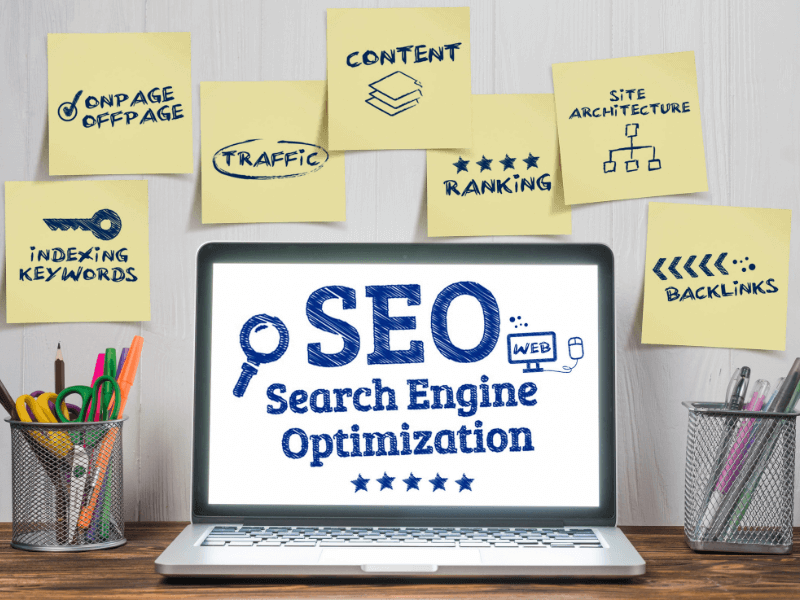E-commerce has become a major disruptor in the retail industry, with an increasing number of consumers turning to online platforms to make their purchases. After all, with the sheer convenience and accessibility, why shop in person? The simplicity of online shopping has led to a significant boom in eCommerce, and it’s estimated that 2.14 billion people worldwide now use eCommerce to make purchases - a whooping number, right?
So, here comes the bad news.
This surge in popularity has resulted in a significant rise in online competition. As a result, it can be tough for eCommerce businesses to drive sales and differentiate themselves from the crowd. But, all hope isn't lost, as we can turn to an eCommerce marketing strategy for help.
But what are eCommerce marketing strategies?
This refers to the channels and tactics used to promote eCommerce businesses; they can be utilized by both B2B and B2C markets to expand their reach and generate more sales.
So, what are these eCommerce marketing strategies available to you? We've compiled them for you here. Let's get started.
Search Engine Optimization (SEO)

One of the most vital aspects of eCommerce marketing is customer acquisition, which is attracting new customers to your website and converting them into paying customers.
A great way to do this is by using SEO to your advantage; doing so will increase your brand awareness and drive more traffic to your eCommerce site.
To achieve this, you want to ensure that your site appears as high as possible on search engine result pages (SERPs) when potential customers search for products or services related to your business.
Here are some SEO practices that eCommerce businesses should focus on:
-
On-page optimization: Optimizing your website's structure, meta tags, and content for search engines to ensure that your website is technically good, easy to navigate, and provides a pleasing user experience.
-
Local SEO: Optimizing your website for local search so that it appears in the local search results when potential customers search for products or services in your area. This can be accomplished by adding your business address and number on your site and creating business listings on local directories.
-
Product optimization: Optimizing your product pages to be easily found by search engines and potential customers. Do this by adding extensive descriptions, high-quality photos, and reviews.
Of course, there are many other SEO tactics to consider. Ultimately, your eCommerce marketing strategy will depend on your goals.
Social Media Marketing
Social media marketing is an effective way for eCommerce businesses to reach and engage potential and returning customers. By creating a strong social media presence and engaging content on platforms such as Facebook, Twitter, Instagram, and TikTok, you’ll be able to showcase your products, drive traffic online, increase brand awareness, and ultimately drive more sales. Win-win.
While we won’t go into detail about the fundamentals of developing a social media strategy and running campaigns, as you can find this in our article on steps to building a social media marketing strategy, we will share some great techniques:
-
Use social media features: The various platforms have a range of capabilities available that will assist you in your eCommerce digital marketing efforts. For example, Instagram, Pinterest, and Facebook allow businesses to create shoppable posts. These make it easy to display your products and purchase with a click of a button.
-
Influencer marketing: Influencer marketing is a powerful tool for reaching a larger audience and increasing brand awareness. You can collaborate with industry influencers to promote your brand.
-
Don’t shy away from ads: Ads are your friend, and you can bet the competition is using ads to their advantage. After all, you need to spend money to make money!
-
Build a community: Nowadays, consumers want to be a part of the process. They want to feel connected and heard. And what better way to do that than by interacting with them on social media? Create interactive content, polls, quizzes, and giveaways - the possibilities are endless. Ultimately, you want to encourage your target audience to develop deeper connections with you and your brand and share their thoughts.
Email Marketing

Email marketing is a low-cost solution for eCommerce sites to reach and engage potential customers while also nurturing previous customers. Using targeted campaigns and promotions, eCommerce businesses can boost conversion rates and encourage repeat business.
Start by building an email list. You can collect email addresses from customers through sign-up forms on your website, purchases, social media, and in-store. Then, you should categorize your email list into different segments based on customer behavior, purchase history, and demographics.
With this information in hand, it’s time for you to launch your targeted campaigns. And the best part? You can now automate the entire process! Use email marketing automation tools to run personalized campaigns and promotions based on the consumer behavior data, such as cart abandonment, purchasing history, or visits to a specific page on your digital store.
And don’t forget to follow up, which you can also automate. Finally, to secure customer loyalty and interest, these campaigns should be as personalized as possible. A/B test various eye-catching subject lines and promotions until you discover the winning formula.
The Next Step: Customer Retention

Once you have acquired customers, it's time to focus on retention. You’ve put in all the effort to get visitors to convert, so why stop there? Especially when you consider that retaining existing customers has a significant impact on ROI. A 5% increase in customer retention results in a 25%– 29% increase in revenue.
But don’t expect these results to happen overnight. Customer retention is a long-term strategy that necessitates ongoing work. So, where do you begin?
Besides focusing on creating a positive customer experience and offering excellent customer service, you should also be implementing retention strategies.
One way to do this is through conversion rate optimization. By analyzing customer behavior and feedback, you can improve your site and products and increase the likelihood of customers purchasing.
Remarketing campaigns are also great ways to retain customers. Remarketing is an effective approach for targeting past site visitors who didn't make a purchase. By reaching out to these potential customers, you can enhance the likelihood of them returning to your website and purchasing.
Another strategy to consider is implementing a rewards and loyalty program that incentivizes customers to make repeat purchases - mix this with personalization, and you’ve hit the jackpot. Did you know that 56% of consumers offer their loyalty to companies that get them? These types of initiatives are ideal for demonstrating to your visitors that you understand their motivation and pain points and can provide them with a solution.
Mobile Optimization

Did you know that people on mobile devices accounted for nearly 56% of all online sales? We can assure you that this number will continue to rise in the coming years.
With far more consumers making purchases on their smartphones and tablets than on desktops, your website must be mobile-friendly. Mobile shoppers are picky. And with the highly competitive nature of the eCommerce industry, your customers will not hesitate to purchase from your competitors if even the tiniest hiccup occurs. In fact, 40% of users will switch to a competitor following a bad mobile experience, yet an alarming 84% have experienced difficulty completing a mobile transaction.
Clearly, it’s more important than ever to cater to your mobile audience. So, ensure your eCommerce site delivers an easy-to-use mobile shopping experience with a well-designed interface, visual content, easy navigation, contact forms, and lightning-fast site speed.
Side Note: Analyze Analytics
Of course, it goes without saying that your eCommerce marketing efforts are worth nothing if you’re not taking the time to monitor and analyze your data. By tracking key metrics such as website traffic, conversion rates, and the effectiveness of each campaign you run, you can gain insight into customer behavior and make data-driven decisions when it comes to future campaigns.
The Bottom Line
To win at e-commerce marketing and increase sales, you’ll need to apply a variety of strategies. By focusing on customer acquisition and retention, e-commerce businesses can increase their visibility, attract more customers, drive more sales, and stand out from the competition.
Want to reap these benefits? Reach out to our experts today! We’re eager to hop on your free consultation call to discuss your tailored eCommerce marketing strategy.
